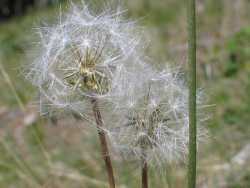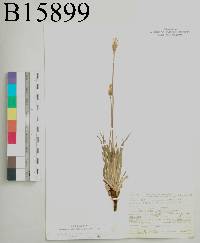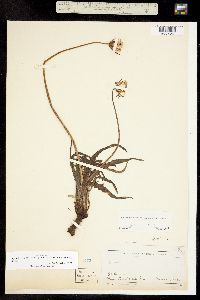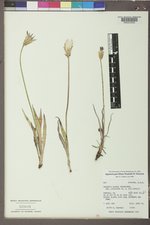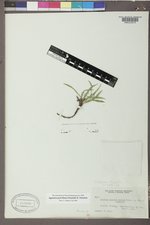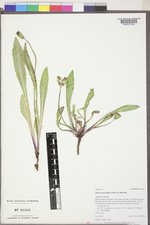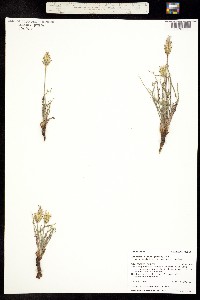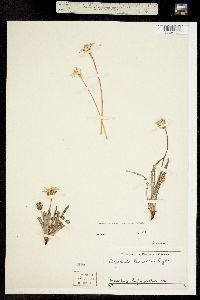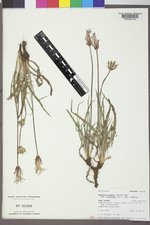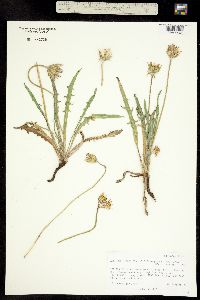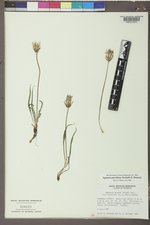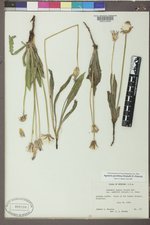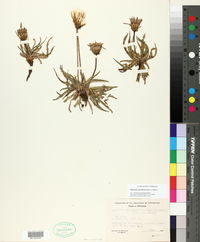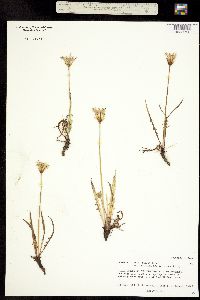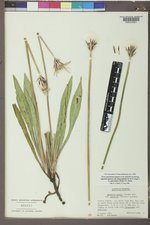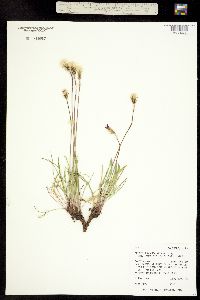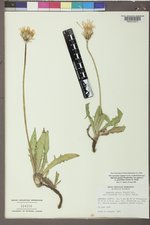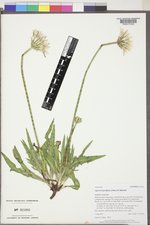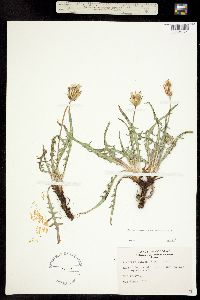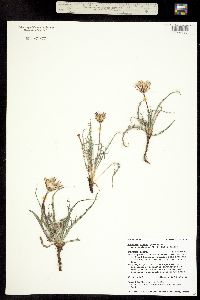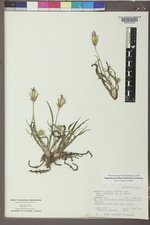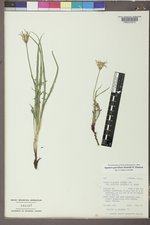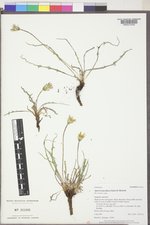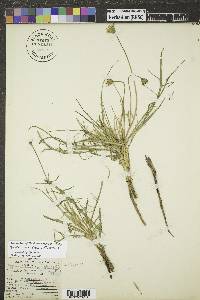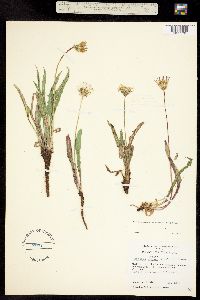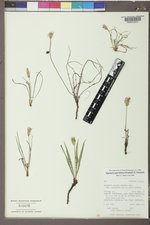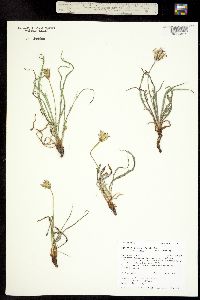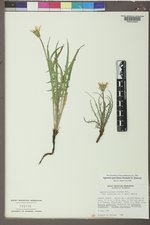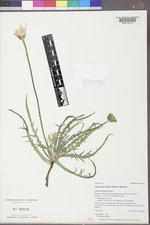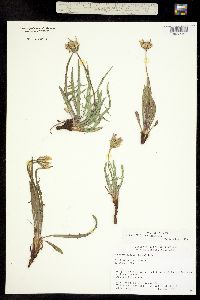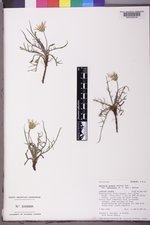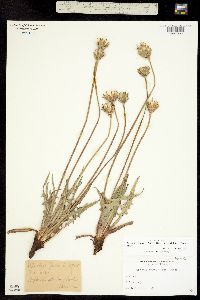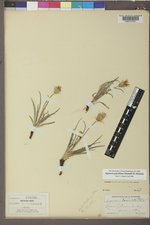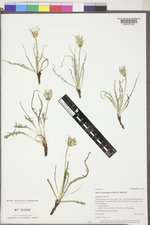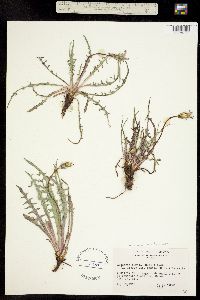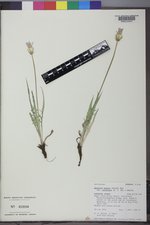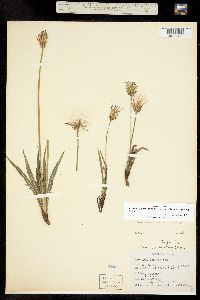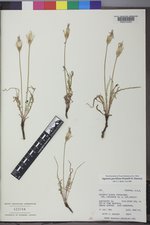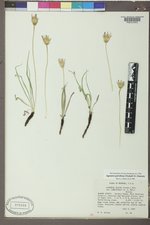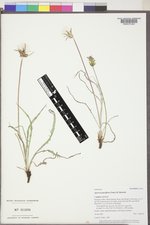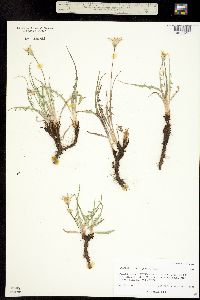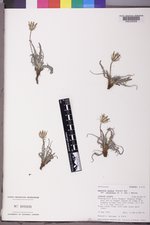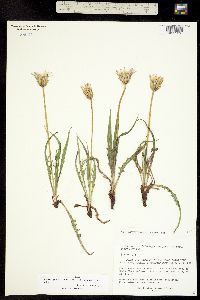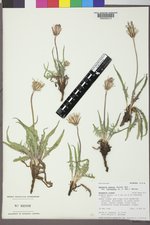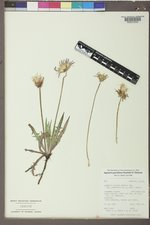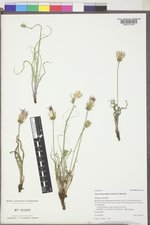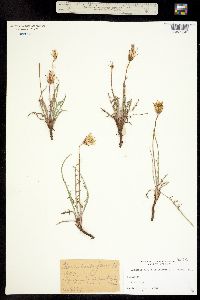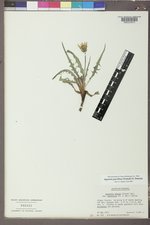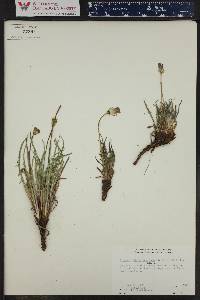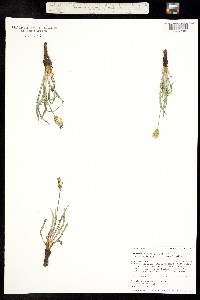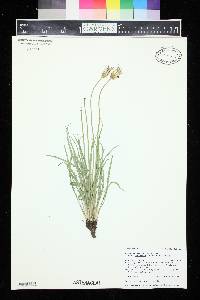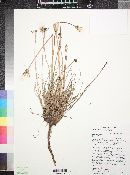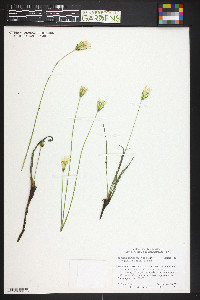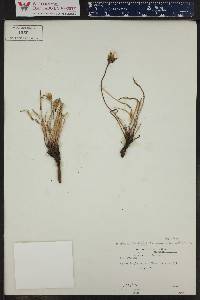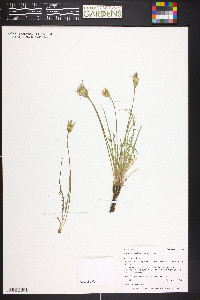Agoseris parviflora
|
|
|
|
Family: Asteraceae
false agoseris, more...Small-Flower Goat-Chicory
[Agoseris caudata Greene, moreAgoseris glauca var. laciniata (D.C. Eat.) Smiley, Agoseris taraxacoides Greene, Agoseris tomentosa , Troximon glaucum var. laciniatum (D.C. Eaton) A. Gray, Troximon laciniatum , Troximon roseum] |
Stems 0. Leaves erect to decumbent; petioles sometimes purplish, margins usually ± hairy, sometimes glabrous or ciliate; blades linear-lanceolate to oblanceolate, (5-)10-20(-32) cm, margins usually lobed, sometimes entire (variable within plants, e.g., outer entire, inner lobed), rarely all entire; lobes (3-)5-8 pairs, linear to lanceolate, mostly retrorse, sometimes spreading; lobules often present, faces glabrous and glaucous or densely tomentose. Peduncles not notably elongating after flowering, [(6-)10-25(-45) cm in fruit], glabrate, or apically hairy to lanate, eglandular. Involucres obconic to hemispheric, 2-3.5 cm in fruit. Phyllaries in 2-3 series, usually medially rosy purple, rarely all green or spotted, margins ciliate or lanate, faces glabrous or sparsely villous, eglandular; outer erect or spreading, adaxially ± tomentose (sometimes glabrous); inner erect, not notably elongating after flowering. Receptacles epaleate. Florets 30-100; corollas yellow, tubes (4-)6-15 mm, ligules 10-20 × 2-4 mm; anthers 3-5 mm. Cypselae 9-18 mm, bodies terete or narrowly conic to obconic, 5-9 mm, beaks 3-10 mm, lengths (1/2-)2 times bodies; pappus bristles in ca. 3 series, 10-20 mm. 2n = 18. Flowering Apr-Aug. Dry habitats, sandy soils, short-grass prairies, sagebrush steppes, pinyon-juniper woodlands, montane meadows, mixed conifer forests; 1000-3400 m; Ariz., Calif., Colo., Idaho, Mont., Nev., N.Mex., Oreg., S.Dak., Utah, Wyo. Agoseris parviflora is found in drier habitats from western Great Plains to eastern foothills of the Cascade Mountains and Sierra Nevada. This is A. glauca var. laciniata of recent authors. The inclusion of A. parviflora within an expanded A. glauca is based partly on the mistaken perception that those two species readily intergrade and that A. parviflora is a xeric variant of the more mesic A. glauca. Although hybrids between the two species occur, frequency of intermediates is no greater than that of any other species in the genus. Agoseris parviflora is known to form intermediates with A. aurantiaca, A. monticola, and A. retrorsa as well. This species exhibits some regional variations. In their extremes, these phases appear more or less distinct but they so completely intergrade that their separation becomes arbitrary.
FNA 2006, Kearney and Peebles 1969 Duration: Perennial Nativity: Native Lifeform: Forb/Herb General: Herbaceous perennial, herbage glabrous to wooly, stems absent, peduncles leafless, with milky sap. Leaves: All basal, erect to decumbent, lanceolate, linear, oblong, or oblanceolate, margins lobed, sometimes dentate or entire, the lobes in 5-8 pairs, linear to lanceolate, mostly retrorse, sometimes spreading, with smaller lobes often present, faces glabrous to sparsely villous or tomentose. Flowers: Heads ligulate, ligules yellow, strap-shaped and lobed or toothed at the tips, with yellow protruding stamens, involucres glabrous to glabrate, 2-3.5 cm high, phyllaries graduated in 2-3 series, the outer ovate, the inner elliptic to oblong, green or purple with purple-black spots, midstripe, or tips, lanceolate or linear with acute to acuminate tips, heads borne solitary on peduncles 10-25 cm tall. Fruits: Achenes conic, 7-15 mm long, nerved throughout, narrowing into a stout beak above. Pappus of white, soft, capillary bristles in series of 2-3. Ecology: Found in sandy soils in dry areas, short-grass prairies, sagebrush-steppes, pi-on-juniper woodlands, open meadows, and mixed conifer forests, from 6,500-10,000 ft (1981-3048 m); flowering April-August. Distribution: Western Great Plains to the eastern foothills of the Cascade Mountains and Serria Nevada. Ethnobotany: Unknown Etymology: Agoseris is from Greek name for goat chicory, while parviflora means small flowered. Synonyms: Agoseris glauca var. laciniata, Agoseris glauca var. parviflora, Troximon parviflorum Editor: SBuckley 2010 |


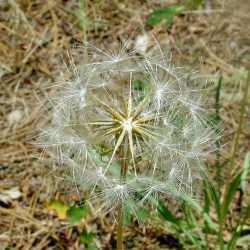
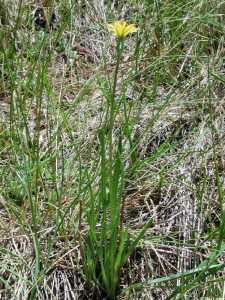
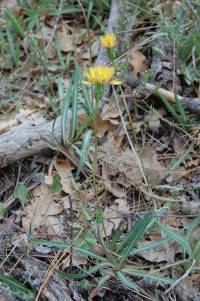
_tn.jpg)
